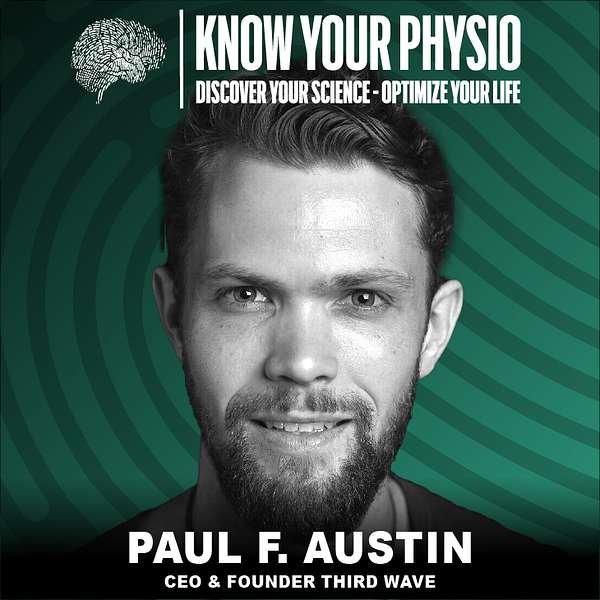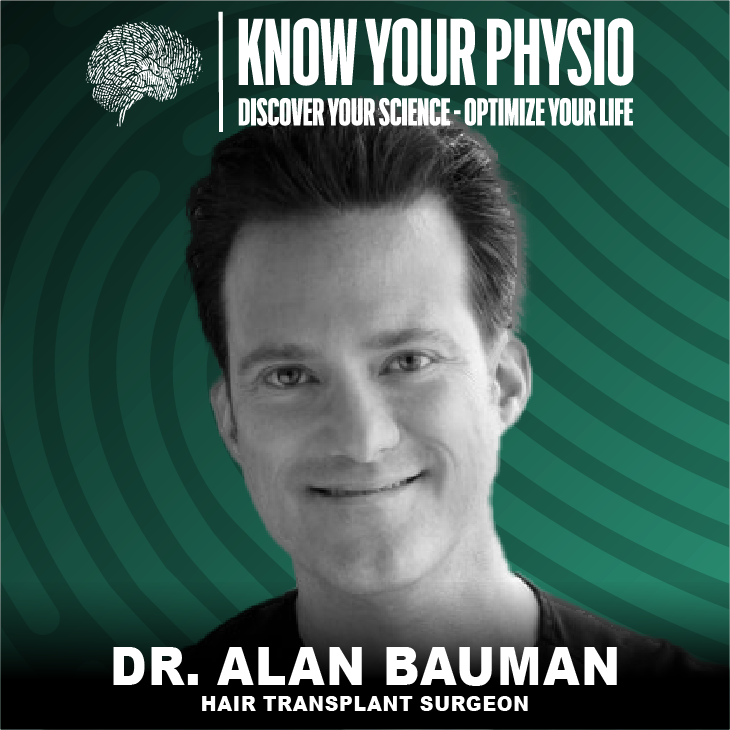
Understanding Hair Restoration & The Science Behind It

Introduction: Why Hair Restoration is More Than Just Aesthetic
Hair restoration is more than just regaining lost strands—it’s about restoring confidence, identity, and overall well-being. In my recent conversation with Dr. Alan J. Bauman, a world-renowned expert in hair transplantation and regenerative treatments, we explored the intricate science behind hair loss, innovative therapies, and why your hair health is a direct reflection of your body’s internal state.
I’ll break down everything you need to know about hair restoration, cutting-edge treatments, and the biohacks that can help you maintain healthy, thriving hair.
Why Hair Loss Happens: The Science of Follicle Health
Dr. Bauman shared that hair loss isn’t just about genetics—it’s a complex interplay of hormones, nutrition, stress, and lifestyle factors. Here’s what you need to know:
- DHT & Male Pattern Baldness: A derivative of testosterone, DHT (dihydrotestosterone), is one of the primary culprits behind hair thinning and balding. If you’re genetically sensitive to DHT, your hair follicles may gradually shrink, leading to hair loss.
- Nutritional Deficiencies: Lack of essential nutrients like biotin, zinc, magnesium, and iron can significantly impact hair growth. A well-balanced diet is crucial for maintaining scalp health.
- Stress & Cortisol: Chronic stress raises cortisol levels, which can interfere with hair regrowth and accelerate shedding.
- Toxic Load & Environmental Factors: Exposure to pollutants, chemicals in hair products, and even hard water can weaken the hair shaft and affect follicular function.
Hair Restoration: From Transplants to Regenerative Therapies

Hair transplants have come a long way from the outdated “pluggy” look. Today’s procedures involve single follicle implantation for a natural appearance. Dr. Bauman’s Bauman Medical Clinic specializes in cutting-edge FUE (Follicular Unit Extraction), ensuring seamless and permanent results.
Aside from transplants, other effective hair restoration therapies include:
✔ PRP Therapy (Platelet-Rich Plasma): Uses growth factors from your own blood to stimulate follicles and accelerate regrowth.
✔ Low-Level Laser Therapy (LLLT): Increases blood flow to the scalp, reducing inflammation and promoting hair growth.
✔ Topical & Oral Medications: DHT blockers like finasteride and minoxidil can help preserve existing hair and encourage new growth.
✔ Stem Cell & Peptide Therapy: The future of hair restoration lies in regenerative medicine, using stem cells and peptides to revitalize dormant follicles.
The Emotional Impact of Hair Loss

Dr. Bauman emphasized that hair is an emotional organ—losing it affects self-esteem, social interactions, and even professional confidence. Whether it’s men experiencing receding hairlines or women noticing thinning hair post-pregnancy, the psychological toll is real.
💡 Takeaway: Being proactive about hair restoration can save you from irreversible damage. Identifying hair thinning early and seeking personalized treatments is the key to long-term scalp health.
How Functional Medicine Transforms Hair Restoration
The Link Between Hair Health and Your Body’s Internal Balance
When we think about hair restoration, we often focus on external treatments—transplants, PRP therapy, or topical medications. But what if the real secret to healthy hair growth lies within? According to Dr. Alan Bauman, hair health is a direct reflection of internal wellness, and functional medicine plays a key role in optimizing it.
Your hair follicles are among the most metabolically active structures in your body, meaning they rely on nutrients, hormonal balance, and proper circulation to thrive. If your system is off balance, your hair will be one of the first indicators.
How Functional Medicine Supports Hair Regrowth
Functional medicine takes a holistic approach to treating hair loss by identifying root causes rather than just addressing symptoms. Here’s how it plays a vital role in hair restoration:
✔ Nutrient Optimization: Deficiencies in biotin, iron, vitamin D, omega-3s, and magnesium can lead to hair thinning. Personalized supplementation can restore balance and enhance hair regrowth.
✔ Hormonal Balance: Elevated DHT, thyroid imbalances, and insulin resistance can all contribute to excessive shedding. Functional medicine specialists analyze hormone levels and recommend interventions to support follicular health.
✔ Gut Health & Absorption: A poorly functioning gut may prevent the absorption of essential hair-boosting nutrients. Adding probiotics, digestive enzymes, and an anti-inflammatory diet can help.
✔ Toxin Removal & Detoxification: Heavy metals, environmental pollutants, and high cortisol levels can impair hair follicle function. Supporting liver detoxification and reducing toxin exposure can improve scalp health.
Biohacks for Stronger, Thicker Hair

Dr. Bauman and his team integrate biohacking techniques to accelerate hair regrowth and improve overall well-being. Here are some evidence-based hacks you can implement today:
🔹 Magnesium Supplementation
Magnesium is crucial for over 300 biochemical reactions, including those that regulate stress, energy production, and hair follicle health. A full-spectrum magnesium supplement can:
- Enhance sleep quality, which directly impacts hair growth cycles
- Reduce cortisol-induced hair loss
- Support mitochondrial energy production in the scalp
🔹 Cold Therapy & Red Light Therapy
- Cold therapy (cryotherapy or cold showers) stimulates blood circulation to the scalp, improving nutrient delivery.
- Red light therapy (LLLT) enhances follicular activity and reduces inflammation, promoting thicker hair.
🔹 Nitric Oxide & Scalp Circulation
Blood flow is essential for healthy hair follicles. Boosting nitric oxide (NO) levels with beetroot powder, L-arginine, or L-citrulline can increase circulation and oxygenation to the scalp.
🔹 Scalp Stimulation & Massage
Regular scalp massages, micro-needling, and essential oils like rosemary and peppermint can:
- Increase blood circulation to hair follicles
- Promote collagen production in the scalp
- Enhance the effectiveness of hair regrowth treatments
The Role of Stress in Hair Loss
Chronic stress can dysregulate the hair growth cycle, leading to excessive shedding (telogen effluvium). Managing stress through:
✔ Meditation & Breathwork (to regulate cortisol)
✔ Adaptogens like Ashwagandha & Rhodiola
✔ Consistent sleep & circadian rhythm regulation
…can drastically reduce hair loss and enhance restoration efforts.
The Future of Hair Regeneration
The latest research in functional medicine & biohacking is pushing the boundaries of hair restoration. Studies on rapamycin, peptide therapy, and stem cell activation suggest that hair regrowth can be enhanced without invasive procedures.
Hair restoration is no longer just about treating the symptoms—it’s about optimizing the entire body for long-term follicular health.
Advanced Hair Restoration Techniques: The Science of Regrowth

Revolutionizing Hair Transplants with Cutting-Edge Technology
Hair restoration has come a long way from the outdated, artificial-looking hair plugs of the past. Today, modern hair transplant techniques offer natural, permanent solutions to hair loss. According to Dr. Alan Bauman, the key to a successful transplant lies in precision, artistry, and innovative technology that ensures seamless integration with existing hair.
While many people think of hair transplants as a last resort, the truth is that early intervention with advanced treatments can prevent the need for surgery altogether. Whether it’s through regenerative medicine, laser therapy, or biohacking, modern science is making it easier than ever to restore full, healthy hair without invasive procedures.
The Most Effective Hair Transplant Techniques

If you’re considering a hair transplant, it’s important to understand the two primary techniques used in hair restoration surgery today:
🔹 FUE (Follicular Unit Extraction) – The Gold Standard
How it works:
- Individual hair follicles are extracted from the back or sides of the scalp (donor area).
- The follicles are meticulously implanted into the thinning or balding areas to restore a natural hairline.
- The procedure is minimally invasive, leaving no linear scars and allowing for quick recovery.
Why it’s effective:
✔ Creates a natural-looking hairline
✔ Faster healing and minimal discomfort
✔ Permanent results with no stitches or scars
🔹 FUT (Follicular Unit Transplantation) – Traditional Approach
How it works:
- A strip of scalp is removed from the back of the head.
- Hair follicles are extracted from the strip and implanted into thinning areas.
- The area is sutured, leaving a linear scar but providing a high graft yield.
Why it’s used:
✔ Suitable for those needing large graft volumes
✔ More affordable than FUE
While FUT is still used in some cases, FUE is now the preferred method for achieving seamless, natural-looking results without visible scarring.
Beyond Transplants: Cutting-Edge Regenerative Hair Therapies

For those who want to avoid surgery, Dr. Bauman and his team offer a range of non-invasive hair restoration treatments that can stimulate regrowth and improve follicle health.
🔹 PRP Therapy (Platelet-Rich Plasma)
How it works:
- A small sample of your own blood is drawn and processed to extract platelet-rich plasma (PRP).
- The growth factors in PRP are injected into the scalp to stimulate dormant follicles.
- This treatment boosts collagen production, enhances blood flow, and supports new hair growth.
Why it’s effective:
✔ Speeds up hair regrowth and reduces thinning
✔ Uses your body’s own healing factors for a natural approach
✔ Minimally invasive with little to no downtime
🔹 Low-Level Laser Therapy (LLLT) for Hair Regeneration
How it works:
- Red light therapy is applied to the scalp using laser caps or in-office devices.
- This stimulates cellular activity, increases ATP (energy) production, and enhances circulation to hair follicles.
Why it’s effective:
✔ FDA-approved for hair regrowth
✔ Improves follicle strength and density
✔ Works well for both men and women
🔹 Stem Cell & Exosome Therapy – The Future of Hair Growth
One of the most exciting advancements in hair restoration is the use of stem cells and exosomes to trigger hair regrowth.
How it works:
- Stem cells & exosomes contain powerful growth factors that repair damaged follicles and regenerate lost hair.
- When applied to the scalp, these cells stimulate new hair growth by activating dormant follicles.
Why it’s a game-changer:
✔ Promotes thick, natural hair regrowth
✔ Reduces inflammation & supports scalp health
✔ Works even for severe hair loss cases
This groundbreaking therapy is proving to be one of the most powerful treatments for long-term hair restoration.
Personalized Hair Restoration Plans: Combining Science & Biohacking
Dr. Bauman emphasizes that no single treatment works for everyone. The best results come from a personalized approach that combines multiple therapies, biohacking, and functional medicine.
💡 A Comprehensive Hair Restoration Plan Might Include:
✔ Diet & supplementation to optimize nutrient levels
✔ DHT blockers & hormone balancing to prevent further hair loss
✔ Red light therapy or PRP injections to boost follicle health
✔ Scalp detox & microneedling for improved absorption of growth factors
✔ Stress management & sleep optimization to support hair regrowth
By integrating advanced hair restoration techniques with a holistic health strategy, it’s possible to regrow, maintain, and enhance a full head of healthy hair for life.
The Future of Hair Restoration: Prevention, Maintenance, and Longevity
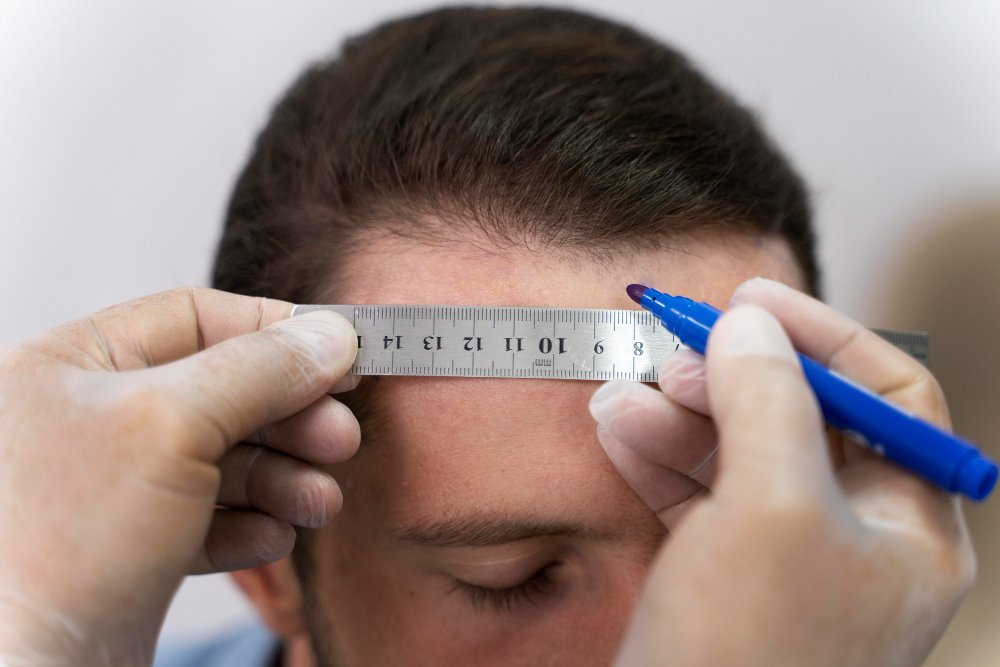
Why Early Prevention is the Key to Lifelong Hair Health
One of the biggest takeaways from my conversation with Dr. Alan Bauman is that hair loss is much easier to prevent than it is to reverse. Many people wait until they notice significant thinning before seeking treatment, but by then, a large percentage of their hair follicles may already be dormant or permanently damaged.
The best approach to hair restoration is proactive intervention—understanding your genetic risks, optimizing scalp health, and incorporating cutting-edge treatments before noticeable hair loss occurs.
✔ Recognizing Early Signs of Hair Loss:
- Increased shedding when brushing or washing your hair
- A receding hairline or widening part
- Noticeable thinning at the crown
- Changes in hair texture or slower growth cycles
✔ When to Seek Professional Help:
- If hair loss runs in your family
- If you’re experiencing hair thinning at a young age
- If you’ve noticed shedding that persists for more than 3 months
By catching hair loss early, you can preserve existing follicles and prevent the need for more invasive treatments like hair transplants.
Building a Long-Term Hair Care Routine

Even if you’re not currently experiencing hair loss, maintaining a healthy scalp and strong follicles is crucial for lifelong hair vitality. Here’s how to incorporate science-backed strategies into your daily routine:
🔹 Scalp Care & Detoxification
- Use sulfate-free shampoos that nourish without stripping oils.
- Consider scalp massages with essential oils (rosemary, peppermint) to increase blood flow.
- Exfoliate your scalp once a week to remove buildup that can clog follicles.
🔹 Optimizing Nutrition for Hair Growth
- Prioritize protein-rich foods like eggs, fish, and lean meats to support keratin production.
- Consume collagen & biotin supplements for stronger hair structure.
- Reduce processed foods and refined sugars, which can cause inflammation and weaken follicles.
🔹 Stress Management & Sleep Optimization
- Practice meditation, breathwork, or cold therapy to lower cortisol levels.
- Get at least 7-8 hours of sleep per night to support hair growth cycles.
- Use adaptogens like ashwagandha to manage stress-related hair shedding.
🔹 Hair Growth Boosters & Advanced Therapies
- Red light therapy (LLLT): Stimulates follicles and reduces inflammation.
- Microneedling with PRP: Enhances growth factor absorption and increases follicle density.
- DHT blockers: Natural options like saw palmetto, pumpkin seed oil, and green tea can help counteract DHT-related hair loss.
A long-term approach that includes regular scalp assessments, personalized treatments, and lifestyle optimization can ensure your hair remains thick, strong, and resilient for years to come.
The Future of Hair Restoration & Regenerative Medicine
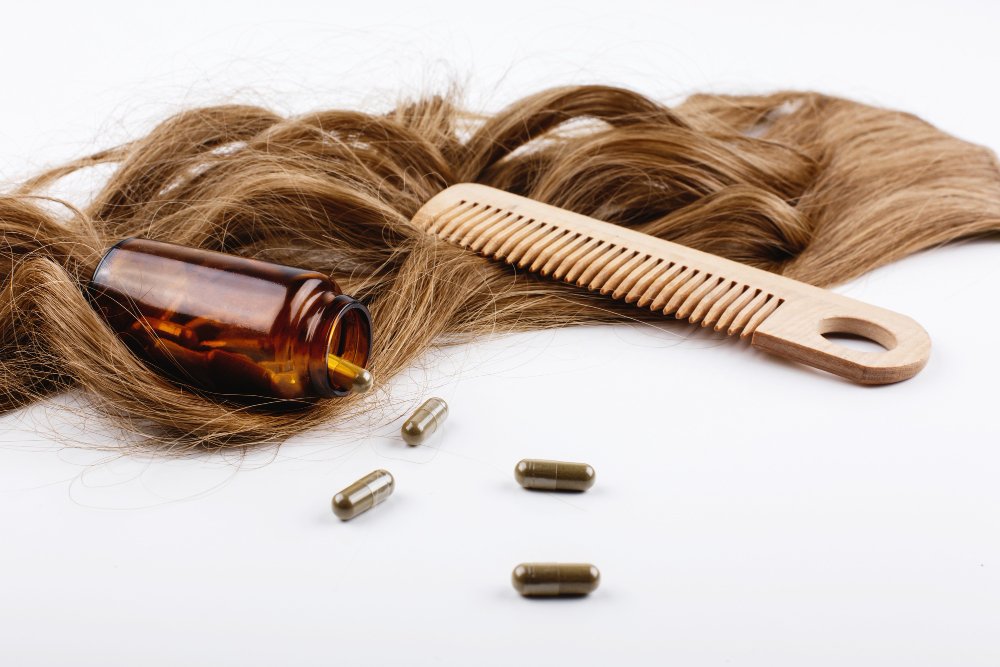
Hair restoration is evolving rapidly, and new breakthroughs in regenerative medicine are paving the way for even more effective, non-invasive solutions. Some of the most exciting advancements include:
✔ Stem Cell Therapy & Exosomes – Repair and regenerate hair follicles at a cellular level.
✔ Gene Therapy & DNA Analysis – Personalized hair loss prevention based on genetic risk factors.
✔ Rapamycin & Longevity-Based Treatments – Exploring ways to reverse hair aging and extend follicle lifespan.
✔ AI-Powered Hair Health Monitoring – Using advanced imaging to detect early signs of follicular miniaturization before hair loss is visible.
With these innovations, the future of hair restoration is shifting from reactive treatments to proactive, regenerative solutions—making it possible to maintain a full head of healthy hair well into old age.
Final Thoughts: Taking Control of Your Hair Health Today
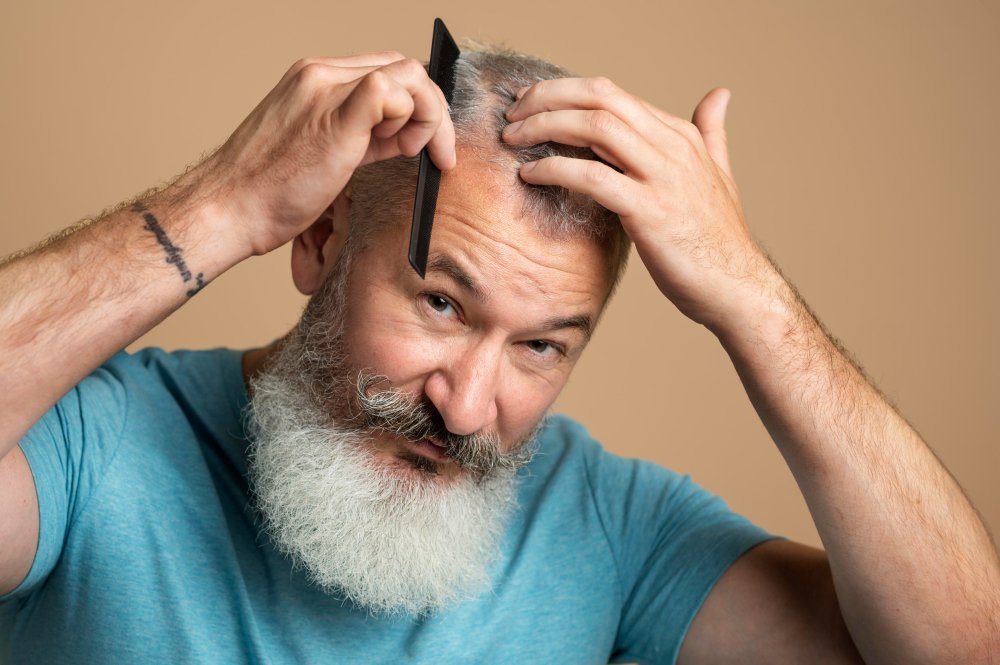
Hair restoration is not just about aesthetics—it’s about confidence, self-expression, and overall well-being. Whether you’re experiencing hair thinning, considering a transplant, or looking to optimize hair growth naturally, the key is to take proactive steps toward scalp and follicle health.
✔ Get a professional hair assessment if you notice early signs of hair thinning.
✔ Incorporate lifestyle changes, supplements, and regenerative therapies into your routine.
✔ Stay informed about the latest advancements in hair restoration.
By combining scientific innovation, functional medicine, and biohacking, maintaining healthy, thriving hair is more achievable than ever before.
Have questions about hair restoration or want to start your own journey? Share your thoughts in the comments below! 🚀


